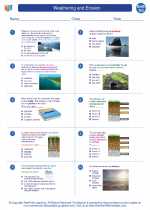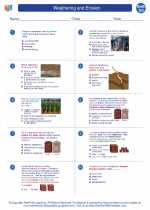Assimilation in Earth Science
Assimilation is a process in which magma incorporates solid minerals from the surrounding rock as it rises to the surface. This can alter the composition of the magma and result in changes to the rock it eventually forms.
How Assimilation Occurs
As magma intrudes into the crust, it can come into contact with surrounding rocks. If the temperature of the magma is high enough, it can assimilate or incorporate some of the minerals from these rocks. The assimilated minerals then become part of the magma, potentially changing its composition.
Effects of Assimilation
Assimilation can lead to changes in the chemical composition of the magma. This, in turn, can affect the properties of the resulting igneous rock. For example, if the assimilated minerals have a different melting point than the original magma, they can cause the magma to become more viscous or change the temperature at which it solidifies.
Study Guide
- Describe the process of assimilation in the formation of igneous rocks.
- Discuss the factors that can influence the extent of assimilation in magma.
- Explain how assimilation can lead to changes in the properties of igneous rocks.
- Compare and contrast assimilation with other processes involved in the formation of igneous rocks, such as fractional crystallization.
- Provide examples of real-world geological features or rock formations that demonstrate the effects of assimilation.
◂Earth Science Worksheets and Study Guides High School. Weathering and Erosion

 Worksheet/Answer key
Worksheet/Answer key
 Worksheet/Answer key
Worksheet/Answer key
 Vocabulary/Answer key
Vocabulary/Answer key
 Vocabulary/Answer key
Vocabulary/Answer key
 Vocabulary/Answer key
Vocabulary/Answer key
